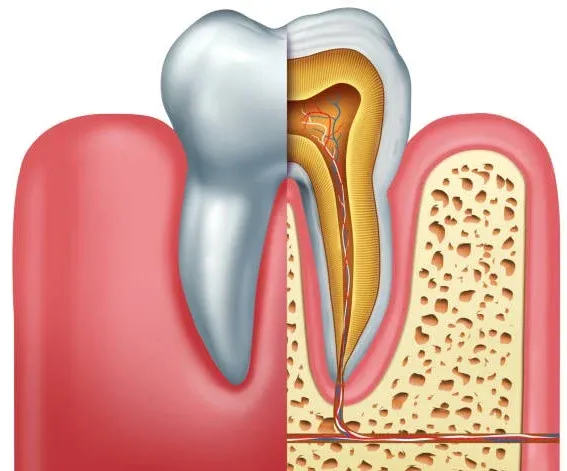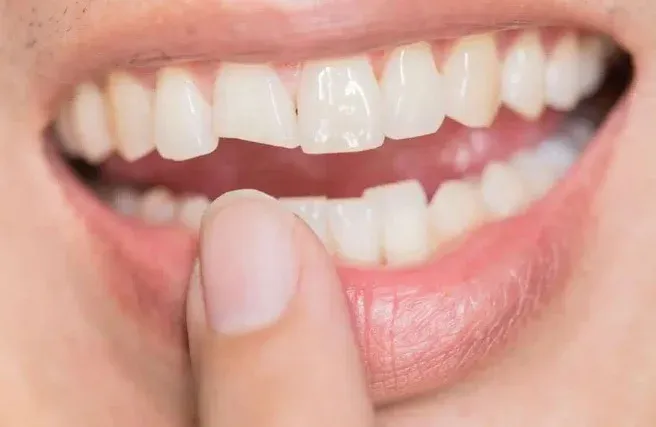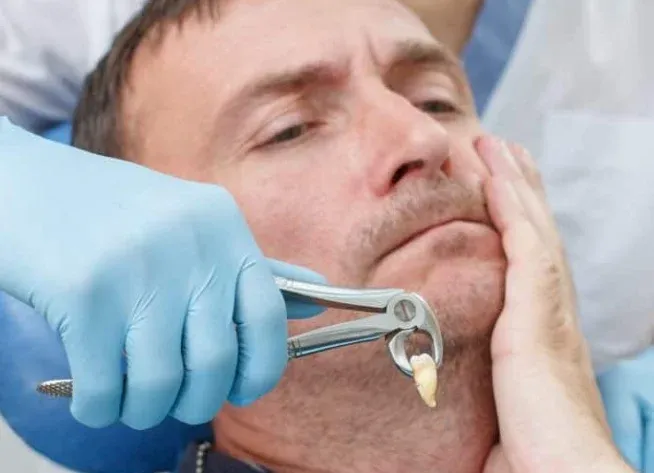Tooth with Root Canal Hurts with Pressure: Months and Years Later
Endodontic therapy, commonly known as root canal treatment, is a dental procedure that is performed to…
Endodontic therapy, commonly known as root canal treatment, is a dental procedure that is performed to save a severely damaged or infected tooth. The procedure aims to remove the infected or inflamed pulp, sanitize the tooth’s chamber and root canals, and then seal it to prevent further contamination.
However, it’s not uncommon for a tooth that has undergone a root canal to experience pain or discomfort long after the procedure, a phenomenon known as “Post-treatment endodontic pain” which can be caused by various factors, such as persistent infection, poor healing, or a suboptimal restoration.
In this article, we will delve into the topic of “Tooth with Root Canal Hurts with Pressure” and explore the causes and management of this perplexing complication.
Tooth with Root Canal Hurts with Pressure:
It is not uncommon for a tooth that has undergone a root canal to experience pain or discomfort months or even years later. This can be caused by a number of factors, such as ongoing infection, improper healing, or a poor-fitting crown or filling.
One possible cause of pain in a tooth with a root canal is ongoing infection. Even after the initial procedure, bacteria can continue to thrive inside the tooth, causing inflammation and pain. This can be treated with antibiotics and additional root canal therapy.
Another possible cause of pain in a tooth with a root canal is improper healing. This can happen if the tooth does not fully heal after the initial procedure, leading to pain and discomfort. In this case, a follow-up procedure may be needed to ensure proper healing.
Additionally, a tooth that has undergone a root canal may experience pain if the crown or filling is not fitting properly. This can cause pressure and discomfort, and the dentist may need to adjust the restoration or replace it.
It’s important to note that tooth can be a complex structure, and there could be multiple reasons why the tooth hurts with pressure months or years after a root canal. It’s important to contact the dentist if you experience this kind of pain after the procedure. They can help you to identify the cause of the pain and provide the appropriate treatment.
In short, tooth pain months or years after a root canal can be caused by ongoing infection, improper healing, or a poor-fitting crown or filling. It is essential to contact the dentist if you experience this kind of pain, to find the root of the problem and provide the appropriate treatment.
Symptomes of failed root canal years later:
symptomes of failed root canal years later can manifest itself through :
persistent or recurrent pain in the treated tooth,
tenderness or swelling in the gums near the treated tooth,
discoloration or darkening of the tooth,
sensitivity to hot or cold temperatures,
a bad taste or smell in the mouth,
and drainage or abscess on the gums near the treated tooth.
It is also possible to have a loose or wobbly tooth and a persistent or recurrent infection in the gums or jaw. It’s important to note that these symptoms can also be caused by other factors, so it is crucial to see a dentist for an examination to determine the cause of the problem and provide the appropriate treatment.
Failed root canal can happen due to various reasons, undetected or untreated canals, inadequate cleaning and shaping of the canals, or failure to adequately seal the root canals with a filling material.
In summary, it’s important to be aware of these symptoms, and if you experience any of them, see a dentist for an examination to determine the cause of the problem and provide the appropriate treatment, which may include additional root canal therapy or extraction of the tooth.
20 years old root canal:
The root canal procedure is done to remove the infected or inflamed pulp (soft tissue inside the tooth that contains nerves and blood vessels) and then the inside of the tooth is cleaned and sealed to prevent re-infection. The procedure is typically done under local anesthesia to minimize any discomfort.
After the procedure, a temporary filling will be placed, and the tooth will be restored with a permanent filling or a crown (a cap that covers the tooth) to protect and restore the function of the tooth.
It’s worth mentioning that a root canal procedure can help to save a damaged or infected tooth, preventing the need for extraction and preserving the natural tooth. However, it’s important to maintain good oral hygiene and regular dental check-ups to ensure the longevity of the treated tooth and to prevent further damage or infection.
In short, a root canal procedure can be done on a 20-year-old individual, as it’s a common dental treatment to save a damaged or infected tooth. It’s important to maintain good oral hygiene and regular dental check-ups after the procedure to ensure the longevity of the treated tooth.
2 roots canal on same tooth still pain:
It is possible for a tooth to experience pain even after multiple root canal procedures, this is known as “persistent endodontic pain”. There are several potential causes for this type of pain, such as:
- Re-infection: if bacteria have entered the tooth after the initial root canal procedure, it can lead to re-infection and pain.
- Missed or untreated canals: if the tooth has more than one root, a missed or untreated canal can lead to pain.
- Inadequate cleaning and shaping of the canals: if the canals are not cleaned and shaped properly, bacteria can remain inside the tooth, leading to pain.
- Improperly sealed canals: if the canals are not sealed properly, bacteria can enter the tooth and cause pain.
- A crown or filling that does not fit properly: if the crown or filling is not fitting properly, it can cause pressure and discomfort.
- A fracture or a crack in the tooth that was not identified before the procedure: if the tooth has a fracture or crack, it can extend into the root canals which can lead to persistent pain.
It’s important to note that persistent pain after multiple root canal procedures is not a common occurrence but if you experience it, it’s important to contact your dentist for an examination to determine the cause of the problem and provide the appropriate treatment.
In short,2 roots canal on same tooth still pain can be caused by various factors such as re-infection, missed or untreated canals, inadequate cleaning and shaping of the canals, improperly sealed canals, a crown or filling that does not fit properly, or a fracture or a crack in the tooth that was not identified before the procedure. It’s important to







